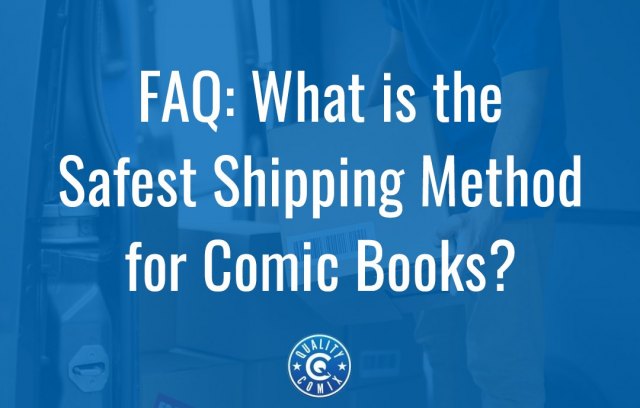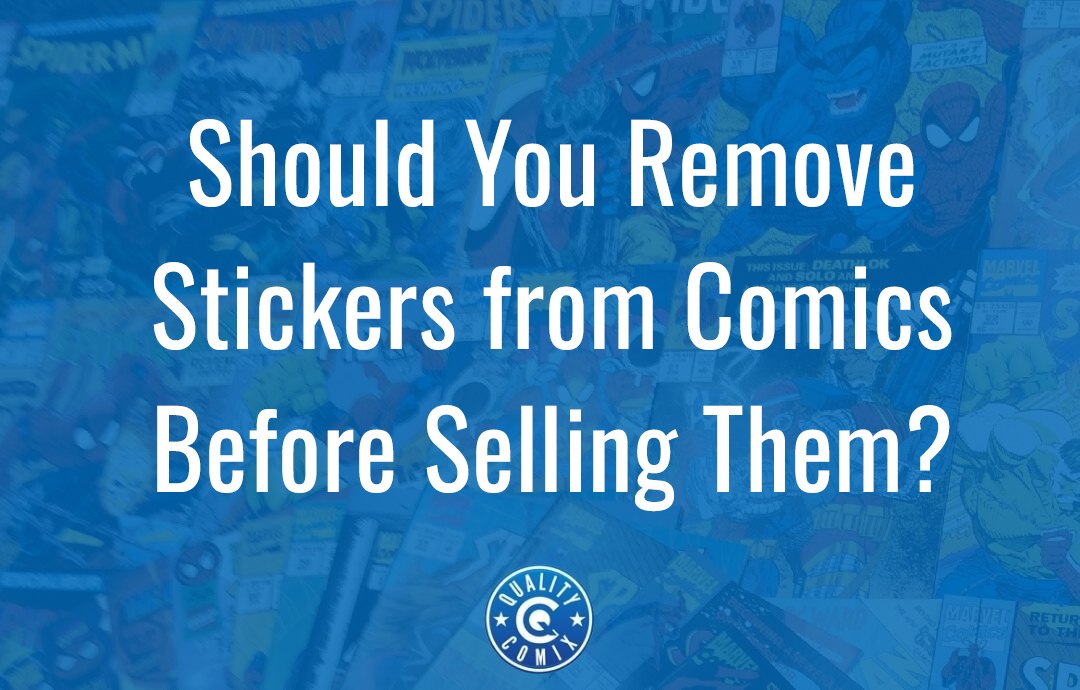
When it comes to comics, the condition is everything. The further a comic is from the pristine, untouched baseline it was when it was first published, the lower its grade is going to be, and thus, the lower its value.
Now, sure, a vintage key issue in terrible condition is still going to blow a modern comic out of the water with its pricing, but if that comic is in good condition? Brilliant.
So, of course, it stands to reason that any serious comic investor will want to do what they can to improve the condition of a comic. In fact, a whole industry has been developed for cleaning and improving the condition of comics. Even grading companies like CGC offer some degree of cleaning service.
One of the trickiest things to handle with a comic isn't dirt, grime, creases, or stains; it's stickers. Stickers can be placed on comics for any number of reasons. Sometimes, it's children playing with their books and sticker sheets. Sometimes, it was a well-meaning label from before the comic was even important or valuable. Most of the time, though, it's a price sticker, either from the original sale or from some early resale before the comic was viewed as truly valuable.
Table of Contents
Is it Even Possible to Remove a Sticker from a Comic?
If you've ever messed around with stickers, you know that once they're stuck to paper, it can often be hard to remove them without damaging either the sticker or the paper.
In the case of comics, of course, you don't care about the sticker itself. You do, however, care a lot about the comic underneath it. The last thing you want to do is reveal a nasty stain, tear the page itself, or damage it further while trying to remove the sticker!
Stickers can negatively affect the grade of a comic! If a comic's grade is generally low enough, a sticker might harm it, but you'll keep the CGC blue label. However, if the comic is otherwise in good condition, the sticker may mean you get a green "Qualified" label, with the negative connotations that entails.
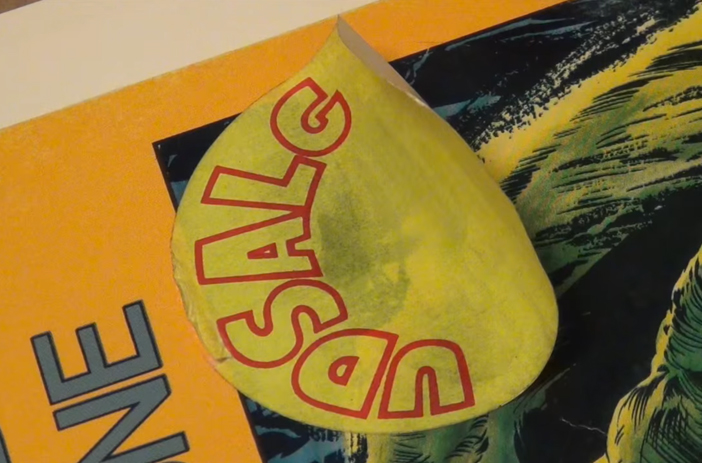
However, it's not impossible to remove a sticker. It depends a lot on the kind of sticker and the kind of adhesive it used, how long it's been there, and whether or not it has done anything to the ink beneath it. Sometimes, a sticker can basically be lifted right off, with virtually no discoloration, no damage to the paper, and nothing to indicate it was ever there.
Other times, though, the sticker will leave unremovable residue or may be so closely bonded to the paper that it's impossible to remove without damage, or the adhesive may have degraded the ink beneath it, so even removing it will leave a sticker-shaped spot on the comic.
Even worse, there's no real way to tell how difficult a sticker will be to remove until you try it. Or, rather, have a professional try it.
Should You Try to Remove a Sticker Yourself?
The answer to this is a firm "it depends." To decide, you need to ask yourself a few questions.
- How much does the comic's value stand to increase if the sticker is removed well?
- How much does the comic's value stand to decrease if the removal damages the book?
- How confident are you in your ability to remove the sticker without damaging the book?
If you've removed stickers from tricky products before and you're relatively confident in your abilities, you can give it a try, but only if you aren't risking significant damage and loss of value to the book. In general, we wouldn't recommend removing a sticker yourself, however.
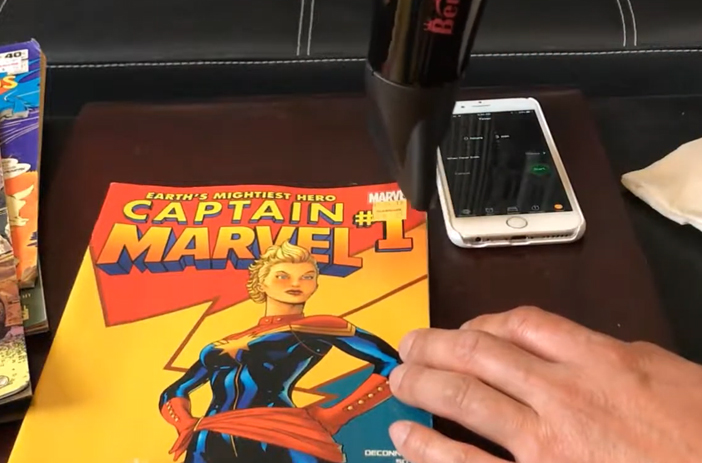
Even if a book's value stands to increase a significant amount, removing a sticker is always a difficult process. The older a comic is, the more likely the sticker is to have damaged the ink beneath, and the more likely it is that the paper is brittle and can be damaged by the removal process.
On the other hand, if you have a bunch of low-value books that are only worth $30 but, with the sticker removed, could be worth $50, then why not? It's still small potatoes in terms of comic value, and if you learn how to remove stickers effectively, you could learn a skill that can impact the rest of your collection or even provide a valuable service to your fellow collectors.
Can Stickers be Removed Professionally?
Yes, with caveats.
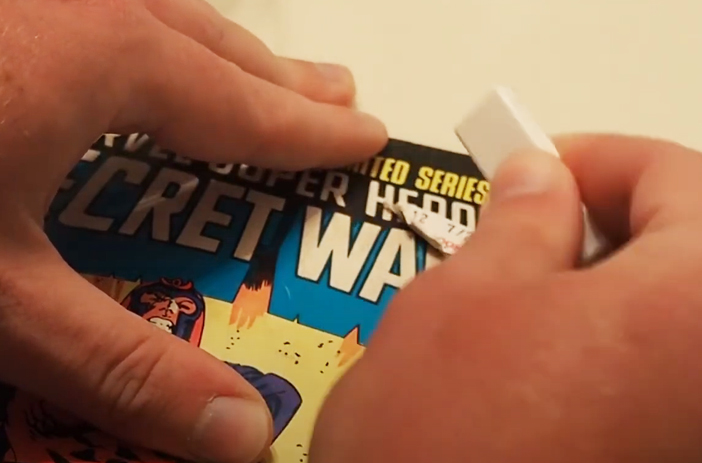
Professional cleaning and pressing services, either offered separately or as part of grading, can potentially remove stickers. Moreover, a company like CGC or CBCS works with thousands of comics every day and can leverage their vast experience to decide whether or not a sticker is even removable and, if it is, how to go about it properly.
Cleaning versus Restoration
One thing to note here is that there's a difference between cleaning a comic and restoring a comic.
Cleaning a comic usually involves carefully sweeping the pages to remove dirt, using an eraser to remove built-up or rubbed-in grime, potentially using treatments to lighten pages, and using heat, controlled moisture, and weight to flatten out creases and divots in the pages.
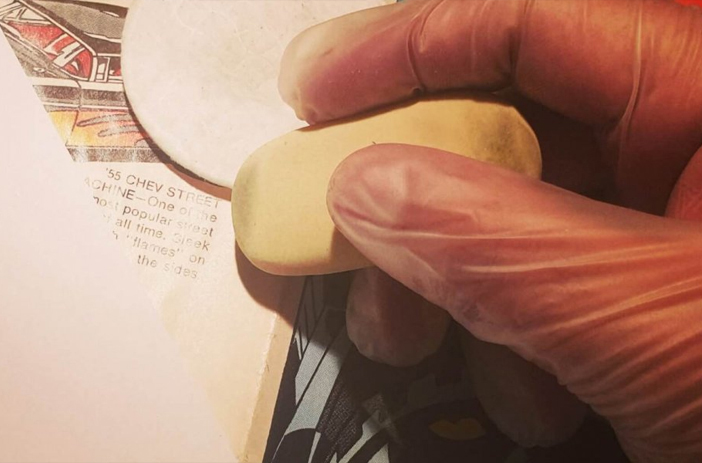
Restoration is more invasive and can involve things like replacing staples, replacing pages, or even stitching pages together with archival tape or paste. This is generally considered tampering and will earn your comic a different label entirely from the grading companies. Moreover, it's generally worth a lot less than an unrestored comic.
Can a Sticker Ever Add Value to a Comic?
Yes!
There are generally four cases where a sticker can add value to a comic.
The first is in a case where stickers are an official and intentional part of the product. For example, comic sticker books like these are blank books meant for collecting stickers. Whether or not stickers are adhered inside it doesn't generally affect the grade and can be beneficial to the value in cases where collectors want the stickers and the book as well.
The second is when the sticker is part of the original comic. This book is a good example. Comics of a certain era often had stickers that you would peel off to reveal a code beneath, which might indicate whether or not you won a sweepstakes or could just be something you redeem for rewards of some fashion. The sticker being in place is a lot rarer than the sticker being missing, and since it's an original part of the comic, having it in place is more valuable than not.
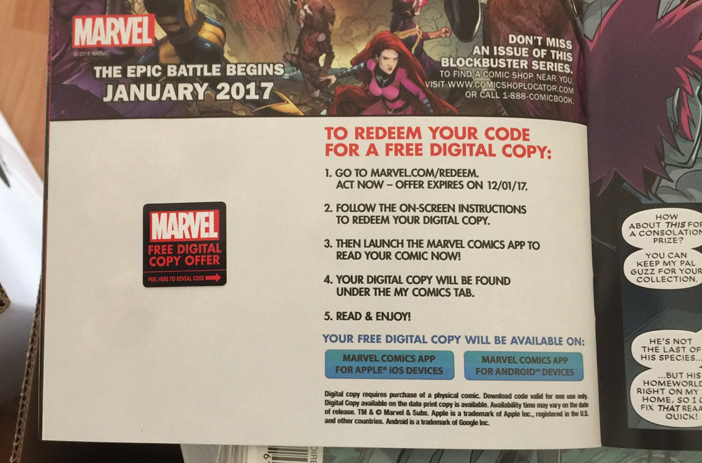
Image source: https://www.reddit.com/r/comicbookcollecting/comments/5m29q7/need_opinions_would_peeling_the_offer_sticker/
In essence, the closer a comic is to as-purchased, as-manufactured condition, the better. Removed stickers, cut out coupons, removed posters and inserts, all reduce the value of the comic.
The third way a sticker adds value to a comic is if it's part of a pedigree collection. Pedigree collections are exceptional quality collections coming from a single source, and they have some serious value attached to them. However, there aren't very many pedigrees out there – CGC only recognizes 61 at the moment – and very few of them are identified by stickers. Chances are, this doesn't apply to your comic.
The fourth is a subset of comic collectors who care about the history surrounding a comic and not just the comic itself. In these cases, some stickers will be more valuable, while others will be less. For example, a sticker that has the name of the store that originally sold the comic and its price can be a value add for the comic. More modern stickers from a resale company are less likely to be valuable or sought-after.
How Can a Sticker Be Removed Safely?
I'm going to reiterate here: Don't try removing a sticker at home unless you're okay with irreparable damage. Leave it to professionals if you must get it removed at all.
As for how it's done, there are a few different methods.
Option 1: Un-Du
Un-Du is a product meant specifically for removing adhesive stickers from various surfaces, including paper products. It's the industry standard for lifting stamps away from envelopes for stamp collectors, for example, and these are cases where the sticker needs to be handled carefully.
The product itself is basically just a solvent that gets beneath the sticker and dissolves the adhesive holding it down, allowing a thin scraper to get between the paper and the sticker and lift it off. It then dries without leaving a residue, ideally. You may need additional work to scrape away all of the dissolved adhesive safely.
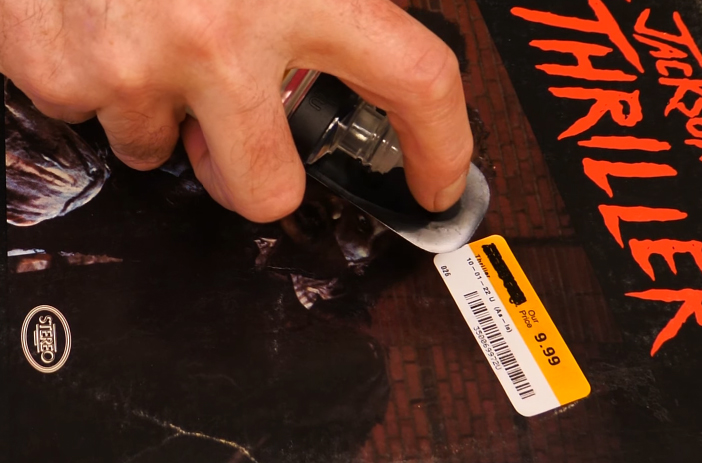
Some people don't recommend this product, however. It works best on glossy papers like magazines or on thicker papers like envelopes. It doesn't work nearly as well on less protected papers or older comics, and those are the ones you'd be more likely to want to remove a sticker from in the first place.
Option 2: Other Chemical Solvents
There are a handful of other chemicals people recommend for doing the exact same thing as Un-Du; that is, dissolving adhesive and allowing a sticker to be removed and the residue scraped away without damaging the comic beneath.
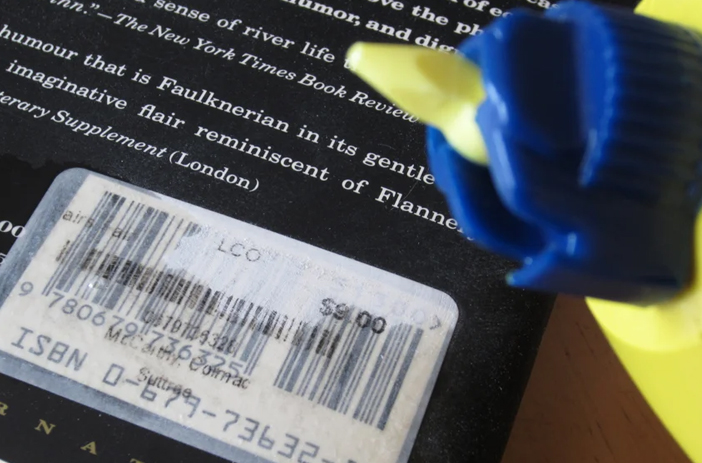
Image source: https://www.instructables.com/How-To-Remove-Labels-and-Stickers-with-lighter-fl/
Options here include:
- Lighter fluid.
- Naphtha.
- Heptane, usually under the brand name Bestine.
A common adhesive remover you should NOT use is Goo-Gone. Goo-Gone is a citrus product that works very well for removing adhesives… but can also leave an oily residue behind, which will be impossible to remove.
WD-40 is another thing people use to remove adhesives, but it can also leave a residue behind and is harsher than your typical fuel products.
Option 3: Heat and Humidity
The cleaning and pressing process, in particular the pressing, involves exposing a comic to enough humidity to soften the pages without damaging them and then pressing them flat with heavy, flat weights. This removes divots and creases when done properly.
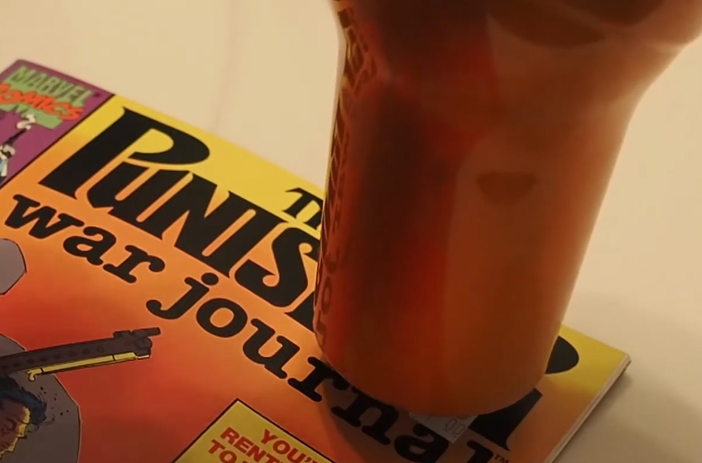
However, one thing that heat and humidity can do is soften adhesives, even very old adhesives. It's a technique used in all manner of repair, cleaning, and restoration, from furniture to collectibles. In this case, the humidity and warmth soften the adhesives, allowing you to scrape up the sticker and remove it. Then, a little careful action and maybe some solvent can help remove any bits of adhesive left behind.
Should You Bother Removing a Sticker?
This is a personal decision.
Sometimes, a book is valuable enough that it doesn't really matter if the sticker is removed or not. The grade isn't going to drop that much for a small sticker, and the potential damage could be worse. However, the difference between a blue label and a green can be a deal-breaker for some people, so that's worth considering.
Sometimes, the sticker is placed in an unobtrusive place and is small enough it doesn't really matter. Removing it could be beneficial, or it might not be that meaningful.
In some cases, especially for personal collections, you may not even care. A suggestion from this example is a good indication: the owner of the comic could set up a display with a tag in the upper corner (on the bag or display case, naturally) explaining the importance of the comic and conveniently hiding the sticker. Sure, they would know the sticker is there, but if it's not visible and it's for a personal collection, who cares, right? It would only be a problem if it wasn't disclosed when they tried to sell it, and that's not going to happen.
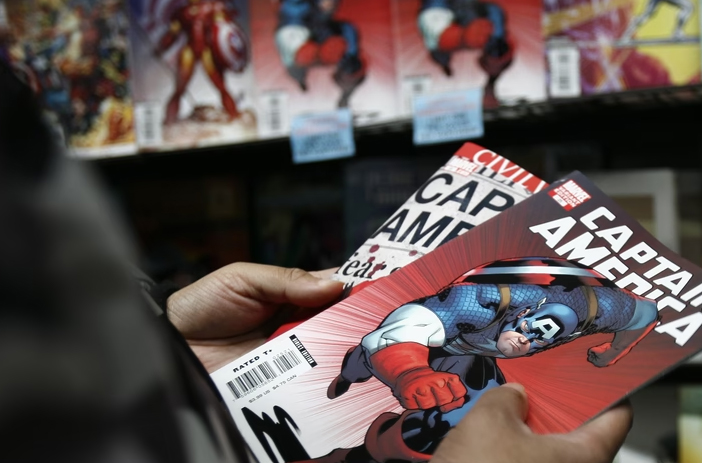
Honestly? Stickers can be a fun slice of history, and when there's enough risk in removing them that it could decrease the value of a comic, it's something best left to the professionals. If you want a sticker removed, talk to a cleaning company to see what they can do, and otherwise, leave it alone.
If you're interested in selling some comics, but they have stickers on them, why not reach out? We're happy to give you our appraisal and tell you whether or not removing a sticker might be a good idea or if it's even feasible at all. Just let us know, and we can get you a free, no-pressure, no-obligation quote and answer any questions you may have.

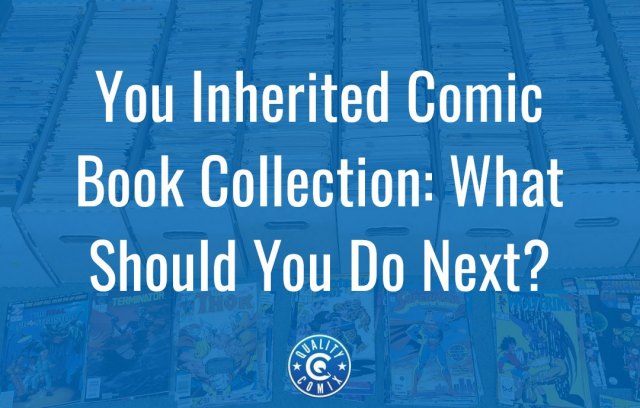
![[Guide] How to Evaluate the Condition of Your Comic Books](https://www.qualitycomix.com/images/size_f/news-000161.jpg)
